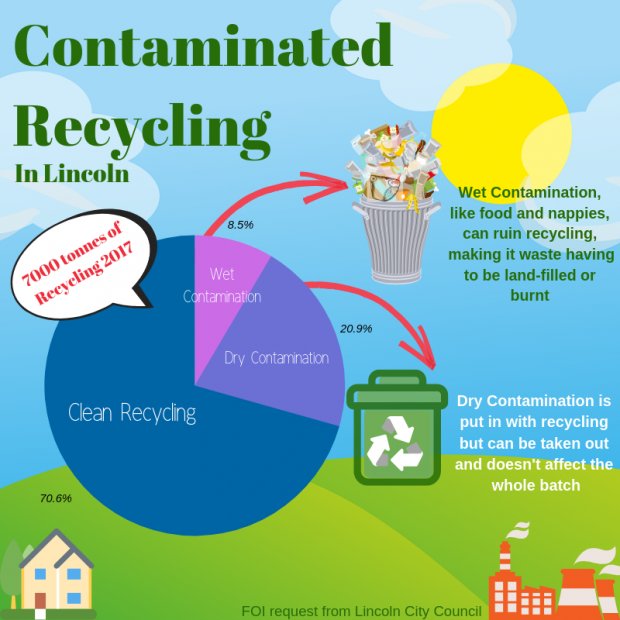Almost 600 tonnes of Lincoln’s recycling was rejected in 2017 due to contamination.
The City of Lincoln Council collected nearly 7000 tons of recycling, but 29% of it was found to be contaminated by waste such as food, textiles and used nappies.

This waste is then sorted by Lincolnshire County Council, who are trying to tackle the ongoing issue of contaminated recycling.
To help achieve this, the Lincolnshire Waste Partnership was created, bringing together all the county’s districts to form an environmental strategy on waste management.
District Councillor Roger Gambba-Jones is the vice-chairman of the Partnership and he said: “It is a big problem and it is a big challenge.”
These contaminates can be put into two categories; firstly, contaminated waste that can be removed, but at a cost to the County Council.
The second category is waste that can contaminate a lorry full of recycling and make it no longer recyclable.
Cllr Gambba-Jones said: “one of the single biggest problems is if you get a food waste product within recycling load, then it soaks in and goes over everything you’ve got.
 “It turns what was recycling and potentially a resource into straight-forward waste, which then goes into a different stream and ends up getting burned or, worse still, buried in a landfill site.”
“It turns what was recycling and potentially a resource into straight-forward waste, which then goes into a different stream and ends up getting burned or, worse still, buried in a landfill site.”
The Partnership is adapting new ways to spread the word and educate households on the damage contamination can cause.
“It is a confusing system and it varies from place to place and it is something we’ve acknowledged that we need to make simpler,” Cllr Gambba-Jones said.
New forms of education are being implemented in different districts to try and meet the targets of the Lincolnshire Waste Partnership.
Examples of types of contamination are being printed on bin bags and visual stickers are being placed on wheelie bins showing what is and isn’t acceptable.










